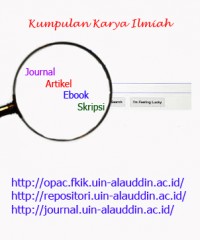Detail Cantuman

Text
Author’s reply to letter from the SIdP, Italian Society of Periodontology and Implantology on: Long-term efficacy of microbiology-driven periodontal laser-assisted therapy
We have to state that the diagnosis of periodontal disease in
ourmanuscript was indeed based on current international stan-dards as those proposed by the American Academy of Periodontology [1, 2]. In the American Academy of Periodontology Task Force Report on the Update to the 1999 Classification of Periodontal Diseases and Conditions, whose purpose was the development of a clinical interpreta-tion of the 1999 Classification of Periodontal Diseases and Conditions,it is stated that BFormulation of a diagnosis of periodontitis is based on multiple clinical and radiographic parameters, all of which may not be required. In general, a patient would have periodontitis when one or more sites had inflammation (bleeding on probing [BOP]), radiographic bone loss, and increased probing depth or clinical attachment loss^. In the supplemental data of our manuscript, we state that BDiagnosis of disease was made on the basis of dental clinical parameters, including periodontal probing depth (PPD), bleeding on probing (BOP), suppuration (PUS), and radio-graphic patterns of alveolar bone destruction^. As is evident, these clinical parameters are in accordance with those referred
in Table1of the American Academy of Periodontology Task Force Report, shown below, andmeet the current international standards. Suppuration was used in our study as an extra pa-rameter for determining the severity of periodontitis. As is known, suppuration has been used as a presumptive indicator of disease activity and is highly specific for disease progres-sion [3]. With regard to the classification used, we included patients with periodontal pockets of 6mmperiodontal pocket depth or deeper, and we were not strictly restricted to patients of 7 mm periodontal pocket depth or deeper (as stated in Table1for patients with advanced chronic periodontitis). In the introductory section of our manuscript, we stated that Bthere is increasing evidence of a strong correlation between the presence of pathogenic bacteria in periodontal lesions and several systemic diseases. In particular, bacteremia and sys-temic endotoxin release can lead to the onset and progression of respiratory and cardiovascular diseases, rheumatoid ar-thritis and diabetes mellitus. Furthermore, oral bacteria can bypass the placenta filter, with a consequent increase of me-diators responsible for infertility, preterm births and under-weight newborns.^As is shown, we mentioned in our manu-script the possible risk factors for periodontal disease, provid-ing indicative references associated to thismatter. However, in our study sample, no participants were diagnosed with any of the known risk factors that are detrimental for periodontal health. The patients selected had a clear medical history
Ketersediaan
Tidak ada salinan data
Informasi Detil
| Judul Seri |
-
|
|---|---|
| No. Panggil |
Artikel
|
| Penerbit | Springer : USA., 2016 |
| Deskripsi Fisik |
-
|
| Bahasa |
English
|
| ISBN/ISSN |
DOI 10.1007/s10096-0
|
| Klasifikasi |
NONE
|
| Tipe Isi |
-
|
| Tipe Media |
-
|
| Tipe Pembawa |
-
|
| Edisi |
Eur J Clin Microbiol Infect Dis
|
| Subyek | |
| Info Detil Spesifik |
-
|
| Pernyataan Tanggungjawab |
-
|
Versi lain/terkait
Tidak tersedia versi lain
Lampiran Berkas
Informasi
DETAIL CANTUMAN
Kembali ke sebelumnyaXML DetailCite this

Perpustakaan Fakultas Kedokteran dan Ilmu Kesehatan
Lorem ipsum dolor sit amet, consectetur adipiscing elit. Duis nec cursus mauris. Nullam vel nunc quis ipsum laoreet interdum. Maecenas aliquet nec velit in consequat.
Info selengkapnya







